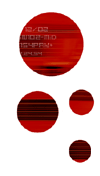

 |
 |
scientific program electroacoustic musics around set theory music analysis tools musicnetwork workshop professional week ircam forum workshops free software for music international multichannel sound forum performing arts and technologies dance and new technologies access to sound heritage thematic evenings demonstration stands artistic program set theory concert music in creation concert cursus concerts opera "one" sound installations open house weekend technologies gallery conferences demonstrations workshop-performances workshops and films ircam laboratories linux install-party concert distribution on internet associated events resonances night at glaz'art émilie simon at la cigale suguru goto reseaunances guided tours of ircam and the multimedia library resonances in pictures resonances 2002 
|
ALLEN FORTESchoenberg's Opus 19 Number 4 : A Set-Theoretic PerspectiveAbstractDespite their brevity, Arnold Schoenberg's Sechs Kleine Klavierstücke (1911) occupy a singular and important position in the composer's oeuvre as "experimental" compositions in a transitional period in his career. The fourth piece, Rasch, aber leicht, although texturally thin is structurally rich. The set-theoretic approach used in this analysis reveals a dynamic interaction among melodic and harmonic components (pitch-class sets) derived from four large "source sets", producing cohesive structures in the linear dimension and marked by especially salient articulative events that are transformed and replicated at strategic moments. Although the source sets belong to the "background" structure of the music and rise to its surface only in special instances-notably in connection with the octatonic source set 8-28-they are continuously represented by smaller sets (subsets), whose intersection creates a beautiful and charming work, one whose intricacy challenges the analyst and the analyst's methodology. Analytical graphics of a linear nature are presented along with the verbal analysis, in order to bring the technical readings as close as possible to the notated music and to clarify and support the descriptions of structure, which involve the language of traditional ("classic") pitch-class set theory. |
|||||||||||||||||||||||||||||||
 |
Organization Committee Copyright Ircam-Centre Pompidou 2003 |